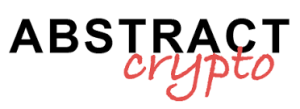The Federal Deposit Insurance Corporation (FDIC) has published 790 pages of letters related to crypto regulation, marking a possible change in approach.
This event offers a detailed overview on the interactions between the agency and financial institutions regarding the crypto sector. The analysis of these documents could provide significant insights on future supervision policies.
An analysis of the documents released by the FDIC on crypto
The publication of these letters represents a step towards greater transparency on the FDIC’s positions regarding cryptocurrencies. The documents include communications between the agency and various financial institutions, highlighting regulatory concerns and compliance requests.
One of the central points concerns the guidelines for banks that wish to offer services related to digital assets. The FDIC has repeatedly emphasized the risks associated with cryptocurrencies, including market volatility, cybersecurity, and the implications for financial stability.
The main concerns of the FDIC about crypto
The documents clearly show that the FDIC focuses on three key areas:
1. Risks to financial stability: The agency fears that banks’ exposure to digital assets could affect the soundness of the banking system.
2. Regulatory compliance: The FDIC requires institutions to demonstrate rigorous controls for managing the risk associated with cryptocurrencies.
3. Consumer protection: The need for clarity in the information provided to end users is emphasized, to avoid deceptive practices.
These aspects reflect a cautious approach, with the aim of mitigating the potential negative impacts of cryptocurrencies on the traditional financial system.
A change of approach in crypto regulation?
The publication of these letters could indicate a change of course from the generally cautious attitude of the FDIC towards cryptocurrencies.
If in the past the agency had adopted a restrictive position, it now seems to want to provide greater clarity to financial institutions interested in integrating digital assets into their services.
However, this opening does not imply a total acceptance. The FDIC continues to require rigorous oversight, suggesting that the crypto sector will have to face a detailed compliance path before achieving broader integration into the banking system.
Implications for banks and the crypto sector
The analysis of the released letters shows that financial institutions will need to adopt more sophisticated risk management strategies to operate in the cryptocurrency sector.
This could translate into:
– Greater collaboration between banks and regulatory authorities to develop stronger compliance frameworks.
– Greater transparency requirements for crypto platforms that intend to collaborate with traditional banking institutions.
– A possible increase in regulatory oversight, with stricter controls to ensure the safety of investors.
Monitoring and regulation of crypto
The publication of these 790 pages of document by the FDIC represents a significant step in the evolution of cryptocurrency regulation.
Although the agency maintains a cautious approach, the release of these documents suggests an openness towards a more constructive dialogue with the crypto sector.
Financial institutions and industry operators will need to carefully monitor the future directives of the FDIC to understand regulatory developments and adapt to new compliance requirements.


